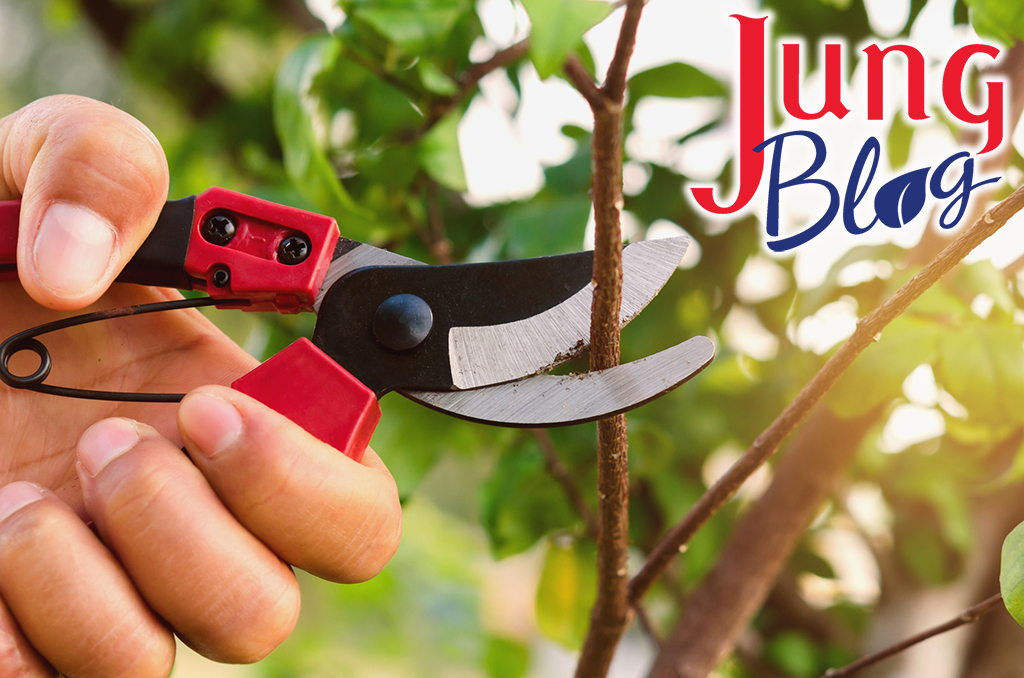
The best time to prune fruit trees is when they are in a dormant to semi-dormant state in late winter to early spring. It is important to do tree pruning during late winter while trees are not actively growing, and neither are disease pathogens. Remember, pruning stimulates growth, if done too early in winter and severe cold weather ensues, trees can be damaged or even killed. Do not rush it. As long as the tree buds have not broken, the tree is dormant enough for pruning. The pruning process is basically the same for ornamental trees as it is for fruit-bearing trees.
Pruning for Fruit
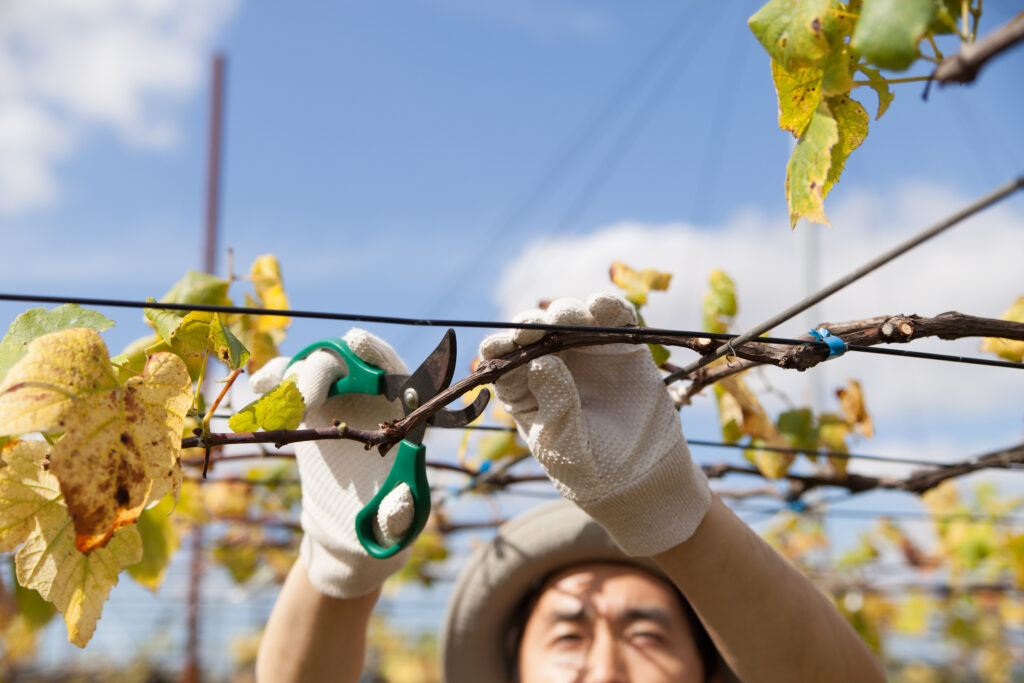
Pruning of dormant fruit trees is necessary to allow them to produce all the fruit they are capable of. Too much pruning stimulates excessive stem and foliage growth which inhibits flower and fruit production. Too little pruning can cause the canopy to grow too dense which prevents adequate sunlight which also prevents flower and fruit production. A dense canopy also prevents adequate air circulation which enhances a greater potential for diseases to take hold and spread.
Types of Pruning Cuts
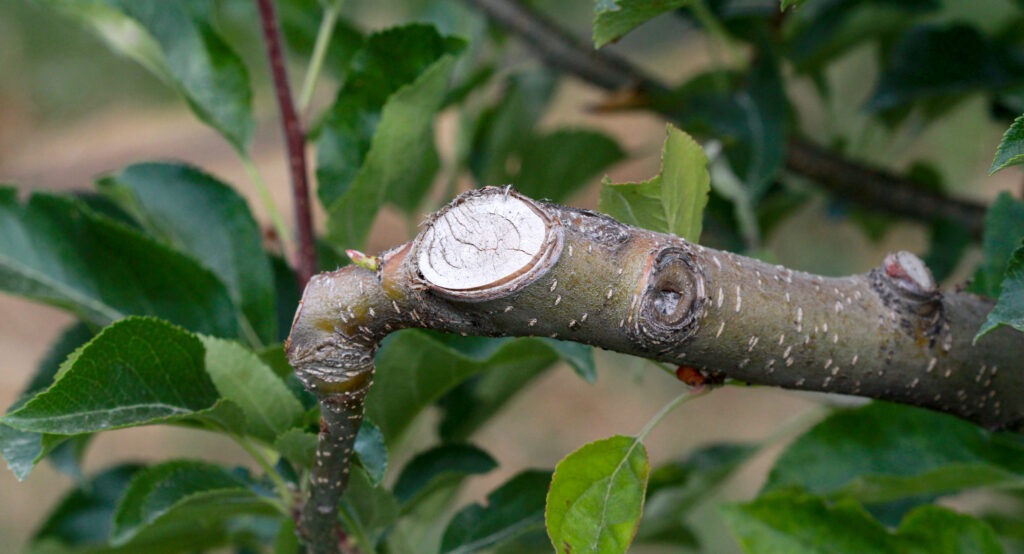
Even the types of cuts you make can be the difference between trees that produce fruit and those that do not make fruit. Two types of pruning cuts are Thinning and Heading cuts.
Thinning
In general, thinning cuts are best. Thinning cuts are those that remove an entire branch to where it emanates from. Thinning cuts stimulate less foliage growth and encourage flowering, which leads to fruiting.
Heading
Heading cuts are those that only remove a part of a limb from the tips down to a specific spot along the limb. These cuts should be reserved to change the growing direction of a branch. As mentioned, indiscriminate heading cuts will force more shoot growth. Lots of shoot growth can then delay or eliminate flowering and fruiting. Not what we want. However, on non-fruiting ornamental trees heading cuts can be used to maintain the size and shape of a tree, but thinning cuts will also be periodically needed to allow sunlight and air into the canopy.
Pruning Priorities
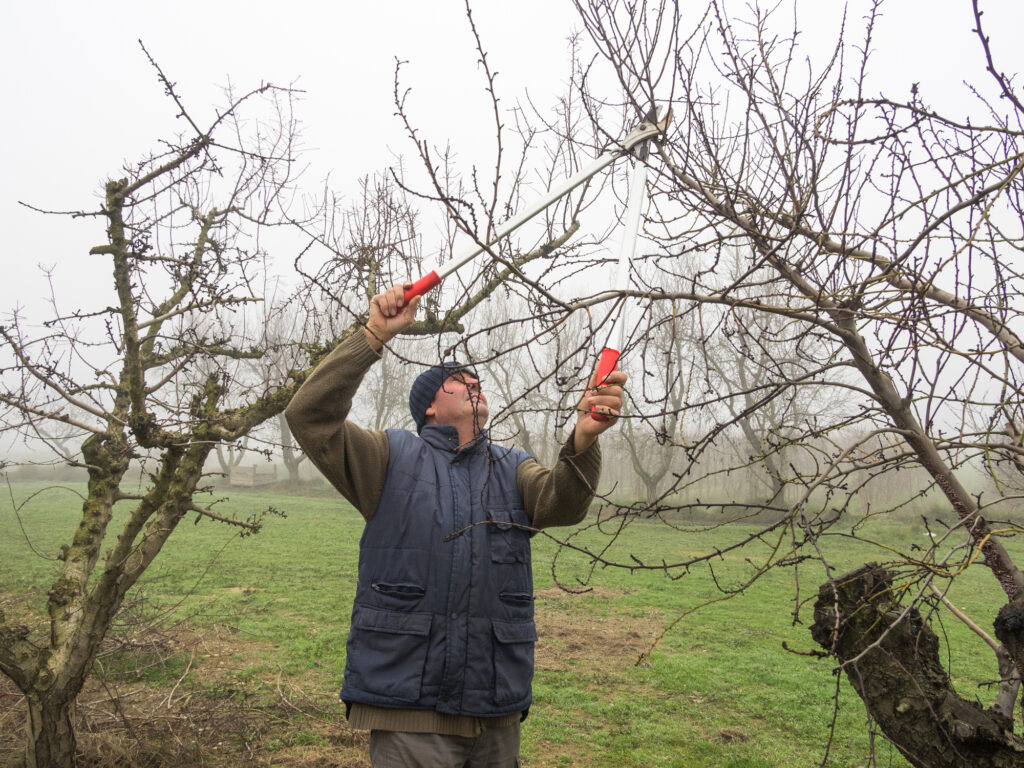
There are many reasons to do annual pruning on any tree. The most important priority is maintaining the overall health and vigor of the tree. There are some important rules to follow when you start pruning trees or shrubs. Here are the proper steps and priorities of tree pruning you should follow.
5 Steps Of Pruning
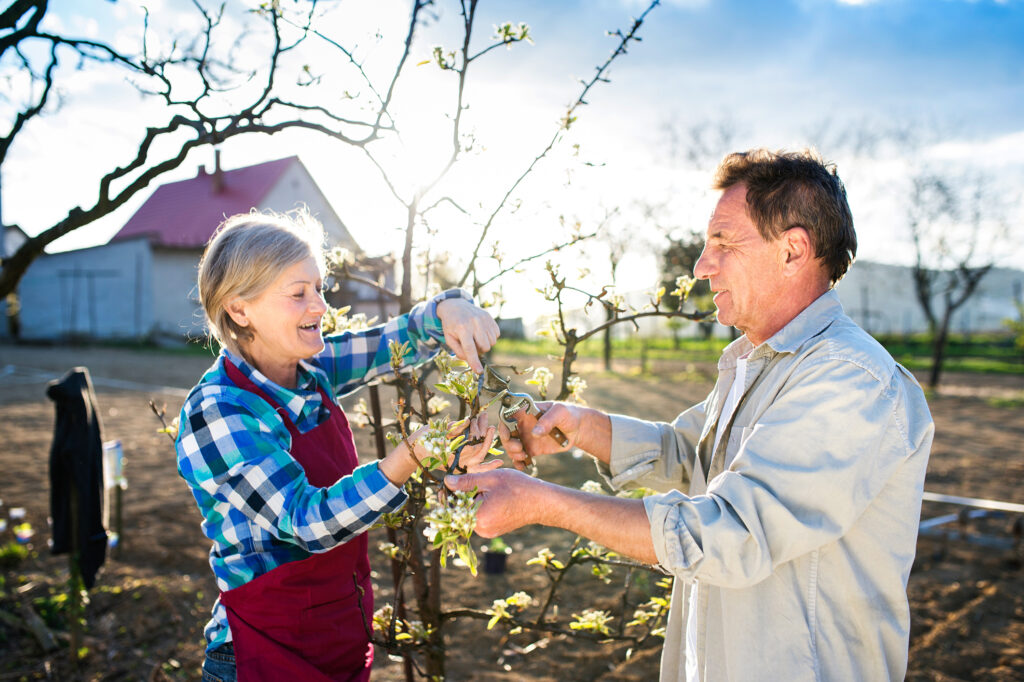
- Examine the entire tree before making any cuts.
- First remove dead, broken, or diseased branches.
- Second, remove any crossed or rubbing limbs and any double leaders. If severe bark damage has occurred, you may need to remove both limbs. Otherwise, choose the weaker of the two to remove. Double leaders create unwanted competition and lead to included bark situations with weak branch attachments.
- Next, remove any water shoots. Water shoots are those that grow in a vigorous and vertical way. Water shoots typically grow more than 2 feet in a season. These shoots rarely produce flower buds that next season.
- Lastly, always remove any root suckers. This may not be an annual occurrence. Root suckers should be removed whenever they do develop.
Keep in mind, the goal is to open up the canopy to allow increased light and air circulation while trying to maintain branches that form healthy 45° angles, which are better able to support fruit loads.
Good Growth vs Bad Growth
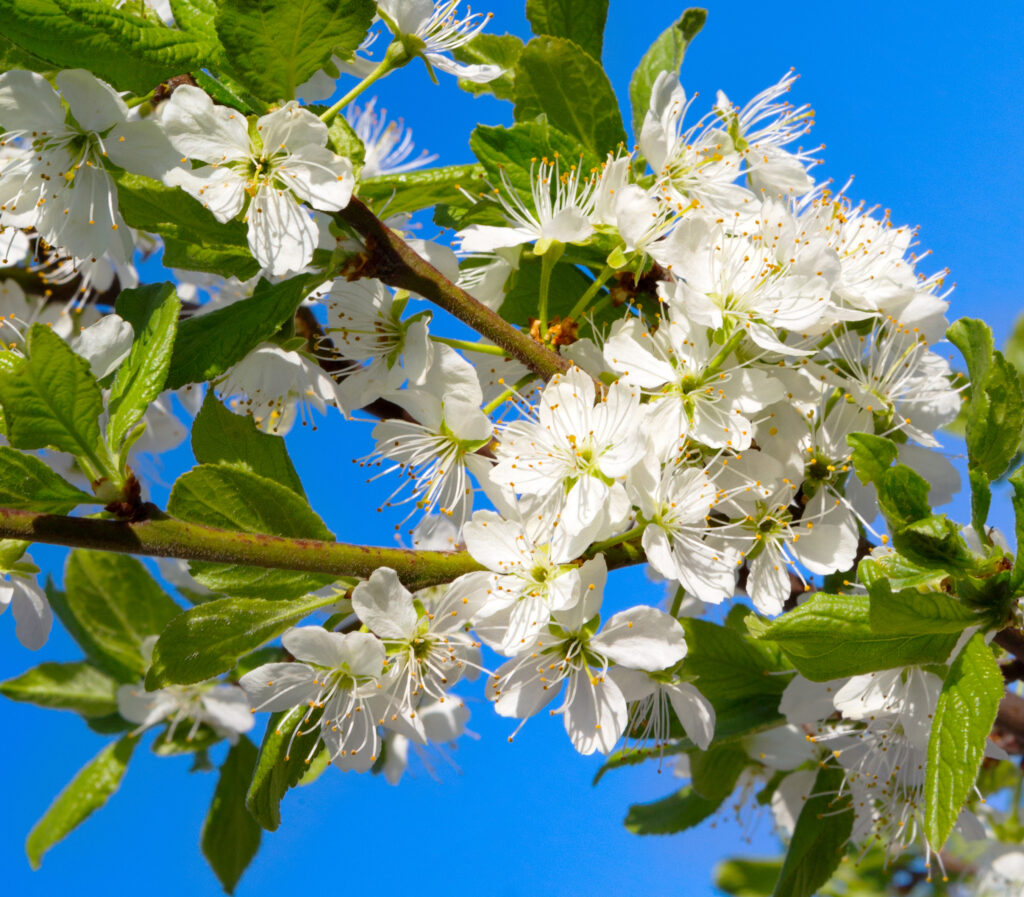
You want your tree to grow vigorously but not too vigorously. All fruiting-type trees have a minimum number of years of non-bearing growth. During these first few seasons of growth, it is important to provide consistent water, adequate fertilization, and proper pruning to develop a healthy bearing tree. Although it is exciting to see fruit, it is highly recommended to remove any blossoms or fruit from an immature tree. Allowing a tree to produce too early can cause it to produce inadequately for many years after.
Non-bearing aged trees should average 18 to 30 inches of new growth per year. Once trees reach bearing age, expected growth should be less, about 12 to 18 inches. This growth rate tells you not only how your tree is doing over-all, but how to fertilize. If the growth rate is low, add nitrogen the following spring. If the tree’s growth rate is more than the recommended average, it indicates over-fertilization.
Non-bearing fruit trees should be fertilized in their first few seasons with a balanced food like Espoma® 10-10-10 All-purpose food. Once fruit trees reach their bearing age, a garden food with a formulation of 3-5-3 or 2-4-3 like Coop Poop® slow-release, non-burning fertilizer is recommended. Just like promoting flowers and fruit in vegetable garden plants, fruiting trees and shrubs should be fertilized with a product that contains lower nitrogen and slightly higher phosphorus type plant food.
Proper Pruning Tools
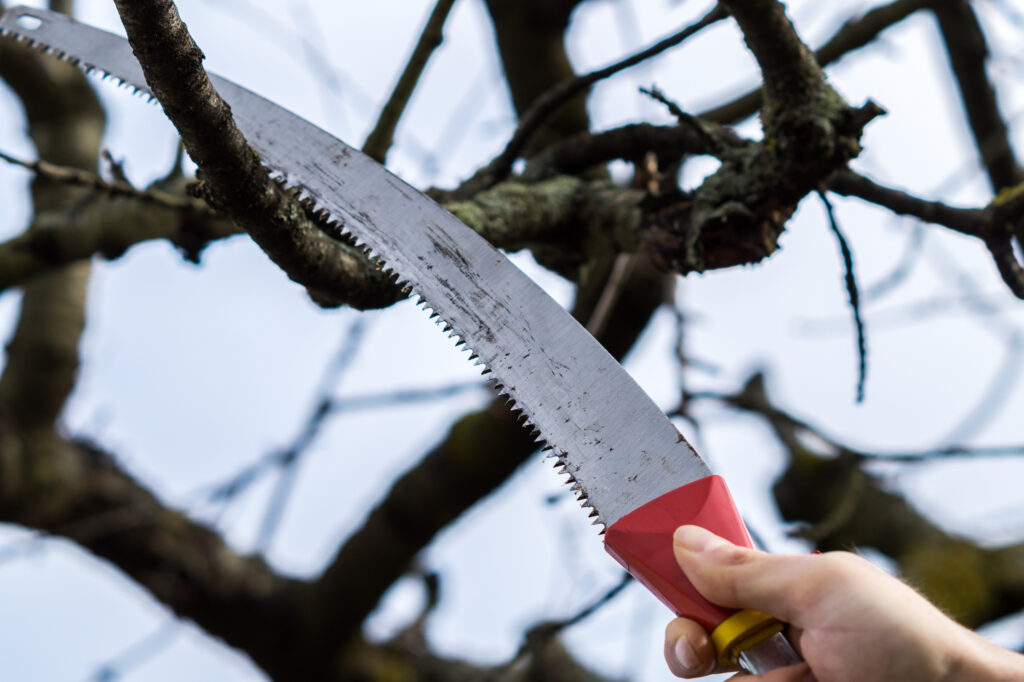
As with any garden project, having the right tools will make a cumbersome task much easier. With pruning, it is no different. Proper pruning tools are pretty simple and straightforward. Hand pruners, hand pruning saw, and pass-through loppers are the basic and necessary tools needed for most pruning projects. With larger-sized trees utilizing a ladder, if you are a stable climber or utilizing a pole-pruning saw may also be necessary.
Jung Top Tip: Never use anvil-type loppers or pruners. Anvil loppers or pruners have a single blade that lowers onto the middle of a flat wide base to chop a branch off. This type of hand tool slices into the top of the branch or limb but crushes the bark unsatisfactorily on the opposite side, which causes severe damage and creates a wound ripe for fungal infection and potential disease. These types of cutting tools should only be used for yard clean-up and reducing the size of a debris pile and not for precise healthy tree pruning.
Pruning for the Future
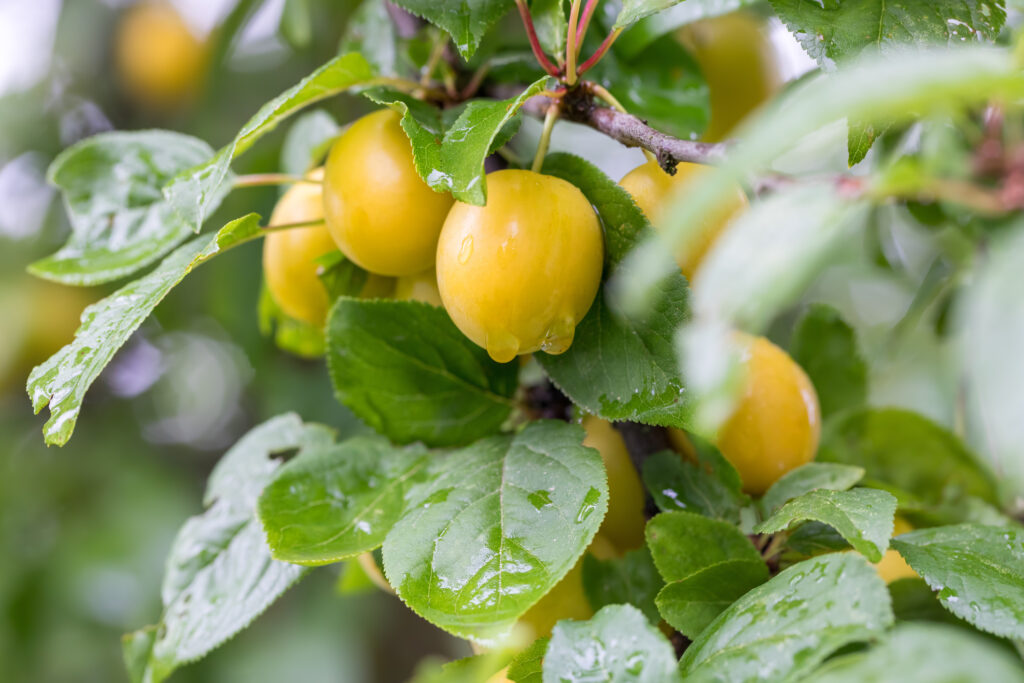
With proper planning, observance, and control annual tree pruning can be a fun and quite rewarding project. Just like many other things in life, starting early when trees are young and malleable will be an important step in creating a well-shaped, healthy, and productive tree. Of course, young trees require minimal amounts of pruning, but some annual attention to your trees will develop a useful pattern that will help keep you engaged and attuned to how your trees are growing and producing well into the future.
Other Recommended Reading

- A Gardener’s Guide To Plant Nutrition
- 7 Environmental Factors To Consider With Gardening
- Garden Trends: Color of the Year 2024
- 10 Colorful Perennials For Your Spring Garden
- Planning Your 2024 Vegetable Garden
At Jung Seed Co, we strive to be your go-to guide for all your gardening needs. Our YouTube channel The Garden Doctor by Dick Zondag is where he provides gardening tips for all levels of gardeners. When you need reliable gardening advice, turn to the trusted experts at Jung.
View our new catalog online or browse our website for your gardening favorites. To receive info on new products, exclusive deals, and specials, be sure to sign up for our weekly email. Join our Facebook page, to discuss all things gardening!
